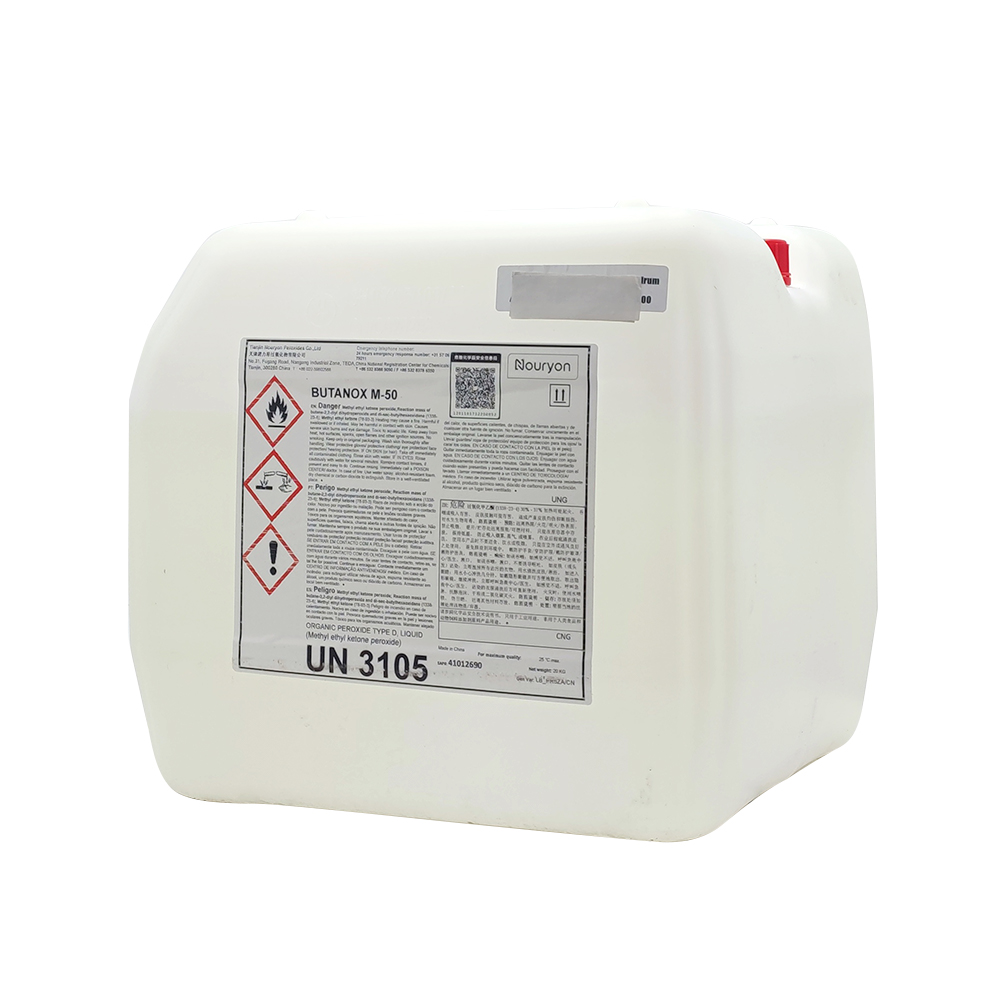Unveiling the Facts about FRP Curing Agents: Hazards of Substandard Peroxyketone Curing Agents
 Jan 05, 2024|
Jan 05, 2024| View:207
View:207As widely acknowledged, Fiberglass Reinforced Plastic (FRP) is an amalgamation of materials, primarily glass fibers and resin. While the curing agent constitutes a small fraction, Methyl Ethyl Ketone Peroxide (MEKPO) emerges as the most commonly used curing agent in ambient-temperature curing processes for FRP. Despite its minimal usage (typically 1%-2% of resin volume), MEKPO plays a pivotal role in adding the finishing touch to the quality of FRP products. Unfortunately, the extensive applications of MEKPO have given rise to unscrupulous practices, with dishonest businesses manufacturing imitation and substandard curing agents to cut costs, leading to a disturbing trend where over half of the current curing agent issues stem from quality non-compliance. Consequently, substandard curing agents have become a significant threat in the present FRP industry.
Given the colossal market demand, numerous domestic MEKPO factories have emerged, yet the industry lacks uniformity. Most are small-scale enterprises without standardized technical norms, quality control measures, or adequate safety protocols and regulatory oversight, resulting in a complete disregard for safety in the industry.
Those in the chemical industry understand that highly concentrated MEKPO products are explosive and sensitive to vibration and friction. Commercial products address this by adding desensitizing agents like phthalates and fatty esters to control the active oxygen content below 10%.
Adhering to national hazardous material classifications and safety standards, MEKPO's safe solvent must be a Class A solvent with a boiling point exceeding 150°C. Unfortunately, some unscrupulous vendors add methanol as a diluent to lower product costs. Methanol's low flashpoint (12°C), flammability, and volatility lead to solvent evaporation during storage, causing curing agent concentration, product stability reduction, and potential explosions upon vibration or friction. This is a direct cause of the high incidence of safety accidents related to MEKPO.
The three major indicators for evaluating FRP curing agents are water content, flashpoint, and active oxygen content. Quality MEKPO typically has a water content below 5%, a flashpoint above 70 degrees, and an active oxygen content below 9%. High water content in curing agents, though cheaper, adversely affects resin curing, resulting in abnormal resin curing and impacting the strength of FRP products, leading to the formation of water mist and bubbles.
Low flashpoints, common in inferior curing agents, pose significant safety hazards, especially in high-temperature environments. Excessive active oxygen content, a prevalent issue in domestically used MEKPO, exceeding 11% or even reaching 13%, aims to reduce usage and shorten curing cycles, enhancing production efficiency. The excessively high active oxygen content is a primary reason for the low safety performance of domestically produced MEKPO.
Over the past two decades, various safety incidents related to MEKPO in China, ranging from minor to severe, paint a grim picture. Safety accidents caused by substandard MEKPO occur frequently during transportation, unloading, and usage, causing deep concern among professionals in the chemical industry. Those who work with and handle MEKPO are often referred to as 'brave souls,' risking their lives for their livelihoods. Therefore, to ensure your safety and interests, choose high-quality MEKPO curing agents from compliant sources.













